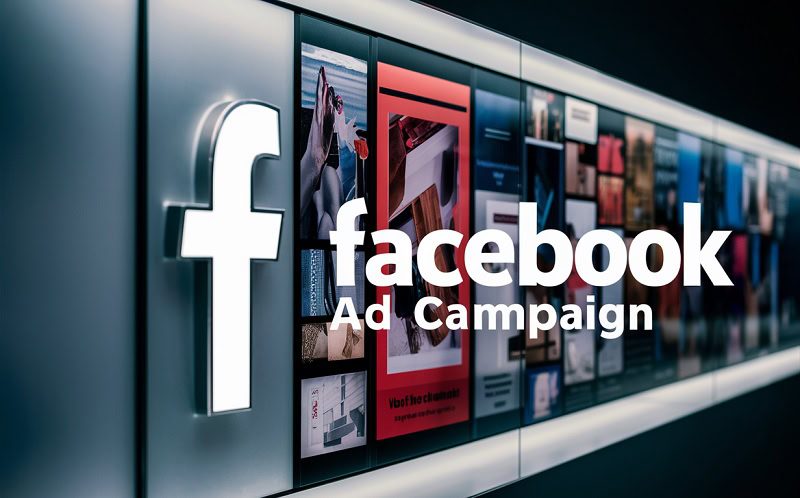Twitter is a unique social media platform, with a plethora of advertising opportunities for brands.
Advertisers can utilise a variety of different formats and targeting options, while also engaging organically with new prospects and existing customers.
But how much do Twitter ads cost?
We’re about to dive into the fundamentals of Twitter advertising, outline the costs associated with the platform, and explain how you can make the most of your budget.

Boost E-Commerce ROI: Download Our Free CPA & ROAS Calculator
If you would like to hire a Twitter ads agency to run your campaigns, please book a free consultation.
What are Twitter ads?
Twitter ads appear in the Twitter feed. They’re available in several different formats (image ad, video ad, Carousel ad, etc) and can be targeted towards specific audiences.
You can also tailor your Twitter ads towards various objectives, meaning the platform can target and acquire prospects across the sales funnel.
Twitter also encourages user interactions and organic conversations, so advertisers can drive high levels of engagement and strengthen their customer relationships.
Are Twitter ads worth the investment?
Twitter advertising can be hugely beneficial for your business and deliver some impressive results.
Here’s why.
The audience is receptive
93% of Twitter users are open to a brand presence on the platform, particularly if brands support user communities and engage with conversation topics.
53% of users on Twitter are also more likely to be the first to buy new products. They’re open to discovering and trialling new brands, which is a big plus for advertisers.
The Twitter audience is ready and willing to buy. It’s just about delivering the right ads to convert them.
It’s ideal for digital marketers
Twitter also has a track record of delivering strong results for advertisers.
People spend 26% more time viewing ads on Twitter versus other social media platforms, meaning strong visibility for campaigns.
In terms of scale, advertisers can also reach around 211 million daily active users through Twitter, meaning there are plenty of valuable prospects to be found on the platform.
The platform encourages interactions
Twitter isn’t just a great environment for paid advertising campaigns.
There are also unique opportunities for organic engagement with potential shoppers and existing customers.
Brands can converse directly with their customer base through regular Tweets and direct messages to nurture long-term relationships.
Relevant hashtags can be used to encourage conversations, and many businesses have a dedicated Twitter handle to manage customer service queries.
How do Twitter ads work?
Twitter ads are delivered through a platform auction system.
Advertisers set up their targeting approach, upload their ads, and then compete against other advertisers to serve impressions.
However, the Twitter auction has a few nuances.
Winning the auction isn’t all about the amount you’re willing to pay. Understanding the different variables that can influence the result is crucial to a successful Twitter ads campaign.
How does the Twitter auction system work?
It’s true that the value of your bid is important when participating in a Twitter auction.
But the quality of your ad is also key.
Every advert that you upload to the platform will be assigned a quality score. This quality score will dictate the performance of your ads in the auction.
So what determines your ad quality score? Well, the Twitter algorithm considers:
- Resonance – is your ad driving consistent engagement?
- Relevance – is your ad messaging aligned with audience interests?
- Recency – are your ads fresh and delivering new content?
Your Twitter quality score, combined with the value of your bid, creates your overall ad score. This is what ultimately influences your auction performance.

How much do Twitter ads cost?
Now that we’ve covered the Twitter auction system, let’s take a look at some average costs for different ad formats.
Promoted Tweets/Promoted Ads
If an organic Tweet is showing positive performance, you can amplify it as a Promoted Tweet in-feed to increase reach and exposure.
This allows you to target users who don’t currently follow your brand. It’s a smart way to drive engagement and increase reach among a new audience.
Promoted Tweets are charged on a Cost Per Action (CPA) basis. On average, it costs between £0.37 and £1.27 to deliver an action.

Promoted Accounts/Follower Ads
If you’re looking to grow brand awareness and increase your Twitter followers, Promoted Accounts can deliver the results you need.
This format allows you to advertise your full Twitter account in a paid format and acquire new followers. These ads appear in-feed, within search results, and in the suggested accounts section.
Promoted Accounts are charged on a Cost Per Follow (CPF) basis. On average, it costs between £1.47 and £2.94 to acquire a new follower.

Promoted Trends/Trend Takeovers
When Twitter users open up their timeline, a sidebar displays current hashtags and topics that are trending on the platform.
Twitter Promoted Trends appear at the very top of this list for 24 hours.
If you’re looking to encourage conversations among your target audience around a certain topic (e.g. a product or an event) then Promoted Trends can be a highly effective tool.
Promoted Trends are charged on a Cost Per Day (CPD) basis. On average, it costs around £150,000 to run a Promoted Trend for 24 hours.

However, it’s very important to remember that these are average costs for these placements.
Actual Twitter costs will vary significantly between advertisers, which is why it’s crucial to monitor your campaign costs and optimise delivery.
Which factors determine Twitter ad costs?
The amount it costs to advertise on Twitter will fluctuate and vary between advertisers.
It’s important to understand the different factors that can impact the cost of a Twitter ad campaign.
Once you’ve wrapped your head around these cost variables, you’ll be in a much better position to keep your costs down and manage your budget more efficiently.

1. Ad type
The type of Twitter ad that you run will have a big impact on your campaign costs.
From a pure cost perspective, Promoted Tweets are generally the cheapest format to buy on Twitter, working to a Cost Per Action model.
Promoted Trends sit at the other end of the spectrum. This format is expensive and is generally only utilised by larger brands with significant advertising budgets.
However, the right ad format for your Twitter advertising campaign isn’t necessarily the cheapest one.
You’ll need to consider your core objectives to identify the right format for the job.
2. Auction Bids
Your performance in Twitter auctions is a major factor in determining your ad costs.
The Twitter auction system is dynamic. Success doesn’t just revolve around the amount that advertisers are bidding.
Your quality score will ultimately influence your auction performance and your advertising costs, so it’s very important to maintain a positive score.
If you master the art of the Twitter auction, you can effectively lower your campaign costs and deliver more efficient impressions.
3. Billable Actions
Twitter works on a Billable Actions model. This means that advertisers only pay for ads when they achieve their desired objective.
For instance, if you’re running a website traffic campaign, you’ll only pay for ads that deliver successful website visits (i.e. on a Cost Per Click basis).
That’s because link clicks are the key Billable Action for a website traffic campaign, meaning you’ll be charged on a Cost Per Link Click model.
This system is particularly useful for smaller advertisers on Twitter because brands are only paying for specific outcomes. This helps to reduce wasted budget and improve efficiency.
Different campaign goals will work around specific Billable Actions, so it’s important to understand which actions contribute towards certain objectives.
Since you’ll only be charged for successful Billable Actions, it’s important to keep a close eye on campaign performance and monitor how your costs are shaping up.
4. Bidding Types
Twitter also enables advertisers to utilise three distinct bidding strategies. Each bid type is geared towards achieving certain objectives and will incur different costs.
1. Automatic Bids
This strategy focuses on delivering the maximum number of actions at the lowest possible price.
The Twitter algorithm will automatically place competitive bids in auctions, aiming to maximise results while staying within the set daily budget. This can be a handy option for new advertisers who aren’t experts in paid social auctions.
2. Maximum Bids
This approach allows brands greater control over their bids, enabling them to set a maximum price per Billable Action.
Auction costs won’t exceed this maximum bid, so if you know the exact price you’re willing to pay for an action, you can set a clear limit for your Twitter ad campaigns.
3. Target Bids
This bidding approach works similarly to Maximum Bids, enabling brands to set a target bid per Billable Action. The platform will then optimise bids to achieve a daily average cost that meets (or beats) this target.
(It’s worth noting that Target Bidding is only available for Follower, Website Traffic, Reach, App Install and App Re-Engagement ad campaigns.)
Each Twitter bid type will spend ad budget in different ways and aim to achieve different objectives.
If you’re new to the world of Twitter advertising, then Automatic Bids can be a great option to help you gather initial learnings and understand average costs.
Campaign Types
Your campaign objective will also have a big impact on your Twitter costs.
Twitter Campaigns fall into three main categories – Awareness, Consideration, and Conversion.
Within each of these categories are different Billable Actions that contribute towards the objective you choose.
For example, Awareness campaigns work towards a Reach goal, where advertisers buy on a CPM basis. If you select Consideration, you might choose to run Followers campaigns, where you’ll buy ads on a Cost Per Follow basis.
Not only will your choice influence the outcomes of your campaign, but each Billable Action will also cost a different amount.
In general, actions taken further up the sales funnel (e.g. video views, engagements) are less expensive than more valuable conversion-led actions (e.g. app installs, link clicks).
Optimising Twitter ads for ROI
Maintaining a positive ROI with Twitter advertising is important for any brand.
After all, you need to be confident that your hard-earned marketing budget is delivering optimal results for your business.
To ensure that you’re on the right track, it’s a good idea to calculate your Twitter ROAS on a regular basis. How do I calculate my Twitter ROAS?

No need to panic if mathematics isn’t your strong suit. The ROAS calculation is super easy – just divide your Twitter revenue by the amount you’ve spent on Twitter ads.
Although this is a basic calculation, it enables you to understand how efficient your advertising is.
If you’re spending more money on driving conversions than you’re receiving from Twitter sales, you know that you need to make some changes.
Beyond ROAS you’ll also need to factor in additional costs associated with sales – for example, manufacturing costs, delivery costs and transaction fees.
Once you’ve combined all of these elements, you’ll have a much clearer understanding of how profitable your Twitter ads are.
Focus on the ad formats, messages and audiences that are delivering the best return on investment.
Regularly check your Twitter reports to identify where your conversions are coming from, and shift budget to the tactics that are driving the most revenue.
Managing your Twitter budget
Effectively managing your Twitter budget is key to running a successful campaign.
The first step is to select the right campaign objective and bidding options.
By focusing on paying for relevant Billable Actions with efficient bidding, you can ensure that you’re making the most of your Twitter budget.
You may find that Automatic Bidding is the best option for your business, particularly if you’re a newcomer to the platform. If you’re a more experienced advertiser, you may prefer setting a specific Maximum Bid to control your spending.
You’ll also need to carefully monitor your bid performance over time.
If certain tactics or audiences are struggling to deliver cost-effective conversions, it’s important to react quickly and move your budget elsewhere.
How to reduce the cost of Twitter ads
Although Twitter ads work through an auction system, that doesn’t mean that advertisers can’t influence the amount that a campaign costs.
Below are three ways to reduce the cost of your Twitter campaigns.
1. Test (and then test again)
Testing new audiences, formats and creative assets is a fundamental part of reducing advertising costs.
By experimenting with new approaches, you’ll be able to understand which aspects of your campaign are performing well – and which need to improve.
For example, you might find that a new creative message is resonating more with your target audience. This can increase your quality score, improve your auction performance, and reduce your bidding costs.
Not every test will reduce your advertising costs – but each test can provide you with valuable data to inform future decisions.
2. Focus on your quality score
Twitter rewards advertisers who are running quality campaigns.
Although your bid amount does play a role in the Twitter auction, the quality and relevance of your ads are equally important.
If your advertising is resonating with your audience, aligning with their interests and reflecting current trends, you have a much better chance of winning Twitter auctions.
This means that the Twitter algorithm will recognise you as a high-quality advertiser, allowing you to win auctions at a lower cost if your ad content is engaging users.
3. Optimise your ads
It’s hugely important to constantly monitor and optimise your Twitter ads. The right optimisations can lead to huge improvements in performance.
Once a campaign is up and running, make sure to regularly check your results through the campaign dashboard.
You might notice that a specific asset is driving more Billable Actions, or identify an audience that is delivering a lower Cost Per Action or Cost Per Engagement.
By acting on these insights, you can focus your money on the tactics that are increasing business revenue.
Getting started with Twitter ads
Now that you’re an expert in Twitter advertising costs, let’s run through the steps involved in setting up a new campaign.
1. Log into your Twitter ads account to get started.
2. Select your desired Campaign Type and choose the right goal for your objective (e.g. Website Traffic, App Downloads, Engagements, etc).

3. Fill in your campaign details and confirm the total budget that you want to spend.

4. Confirm your Ad Group, or set up multiple Ad Groups if needed. You’ll need to confirm budgets, audiences and timings for each Ad Group.

5. Select your preferred Bid Type. This is an important step. If you’re still familiarising yourself with Twitter ads, Automatic Bids can be a smart choice.

6. Build your target audience. You can utilise demographic data, keyword targeting, Interest targeting or customer lists to create your perfect audience.

7. Create a new Tweet, or promote a Tweet that already exists on your page.

8. Review your campaign information, and hit launch whenever you’re ready.
Just follow the above steps, and you’ll be ready to get started with a Twitter campaign. Simple, eh?
Although your Twitter advertising costs are influenced by several variables, that doesn’t mean you can’t control your spending.
By focusing on creating quality ads, targeting receptive audiences and optimising towards the right objectives, you can reduce your Twitter costs and deliver cost-efficient conversions.
Related
- Twitter Ads Objectives – Which One Is Right For Your Campaign?
- Do Twitter Ads Work






